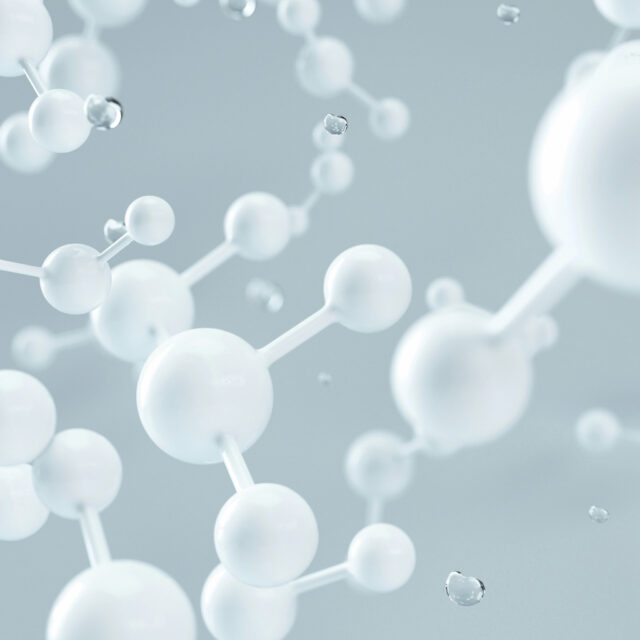
By Amely Greeven
If you have even half an eye on the longevity space—or on the biohacking rituals of health gurus, celebrities and elite performers—you likely have heard of NAD. When longevity researcher David Sinclair released his bestselling book Lifespan four years ago, his research made this universal molecule famous and an apparent secret of youth. Now, supplementing with NAD’s precursors NMN and NR as well as taking direct infusions of NAD via IV is becoming all the rage. But what is it exactly, and how might it be used as part of a strategy for holding on to vitality and dodging the decrepitude of age? Here, a quick primer.
What is NAD?
Considered a cornerstone of cellular health, NAD (nicotinamide adenine dinucleotide) is a coenzyme that is crucial for cells to make energy. There are two forms—NAD+ and NADH—but to simplify, think of NAD as a power source for the biological processes that keep the brain, heart and muscles vital and resilient, and skin glowing and healthy. Crucially, it is intimately involved in vital cell processes like DNA repair, cell signaling and immune system function, especially anti-inflammatory processes, and keeping circadian rhythm regulated for optimal sleep. Some of this happens by activating the family of sirtuin enzymes, a class of proteins that, according to Sinclair and others, help switch on genetic longevity pathways.
Why all the buzz?
NAD is a central player in what some are calling the “health span revolution,” the new studies and practices devoted to helping us hold on to our best health. Research has illustrated how NAD levels decline significantly in cells as we age, and after stresses like sickness, overindulgence, poor diet, extreme exercise and crossing time zones. This decline is seen to be a core driver of poor health and susceptibility to age-related disease. Conversely, research points to the benefits that come from boosting NAD levels such as increasing energy, brain clarity, reduction in inflammation and protection against DNA damage. Experts say that in a few years, we will be as familiar with NAD as we are with vitamin C.
How can I best care for my NAD levels?
All the obvious lifestyle factors like nutrient-rich food, exercise, restful sleep and proper light exposure help maintain your levels, and research shows that interventions like intermittent fasting may increase them. (Note that not all experts agree on the benefits of IF.) Nonetheless, many health-seekers are now hedging their bets, and supplementing with oral precursors to NAD like NMN (nicotinamide mononucleotide) or NR (nicotinamide riboside), in order to feel more energized and clearer-minded, and to recover faster from exercise or stress. Topical as well as nasal spray and suppository forms are also becoming available. Top-tier NAD experience comes through IV infusion, a higher-commitment health protocol that provides a higher dose in a very bioavailable form.
When would I choose an IV infusion of NAD?
Regenerative medicine doctor and NAD researcher Halland Chen says that people with brain fog, chronic health conditions, insomnia and addiction issues, or those in need of a significant health reset, can benefit from a personalized NAD infusion regimen. (He notes that NAD infusions were initially used in detox treatments for drugs, alcohol and pain meds.) It can also be a way for those looking to boost general performance to anchor an overall NAD protocol. “Some choose to do infusion once or twice a year,” Dr. Halland adds, “the way other people might do a biannual cleanse or detox, and then maintain with oral precursors more regularly.” Halland says that the IV form is analogous to taking your car in for a full engine tune-up; the oral version is like changing the engine oil between tuneups. But IVs are not for the faint of heart: A single infusion, if done with highest grade compounded NAD, can take up to three-and-a-half hours depending on body tolerance, cost hundreds of dollars and cause nausea at first. (Halland says discreet infusion pumps are available to take your infusion “on the go”.)
According to Halland, “NAD support is a very emerging field. Nobody has precisely identified the difference between IV and oral NAD, or which is optimal for which situation—moreover, we need more study of how NAD can maximize the body’s energy and healing mechanisms.” Halland hopes that his current research will contribute some of these answers, but until then, it’s likely that your primary care provider might be skeptical of an NAD regimen. “The people drawn to NAD,” he says, “tend to be highly motivated people wanting to take a lot of personal responsibility for their health.” He advises you to do your research, get referrals to a quality provider or supplement, listen to your body, and watch as studies on NAD begin to show its possible fountain-of-youth effects.



